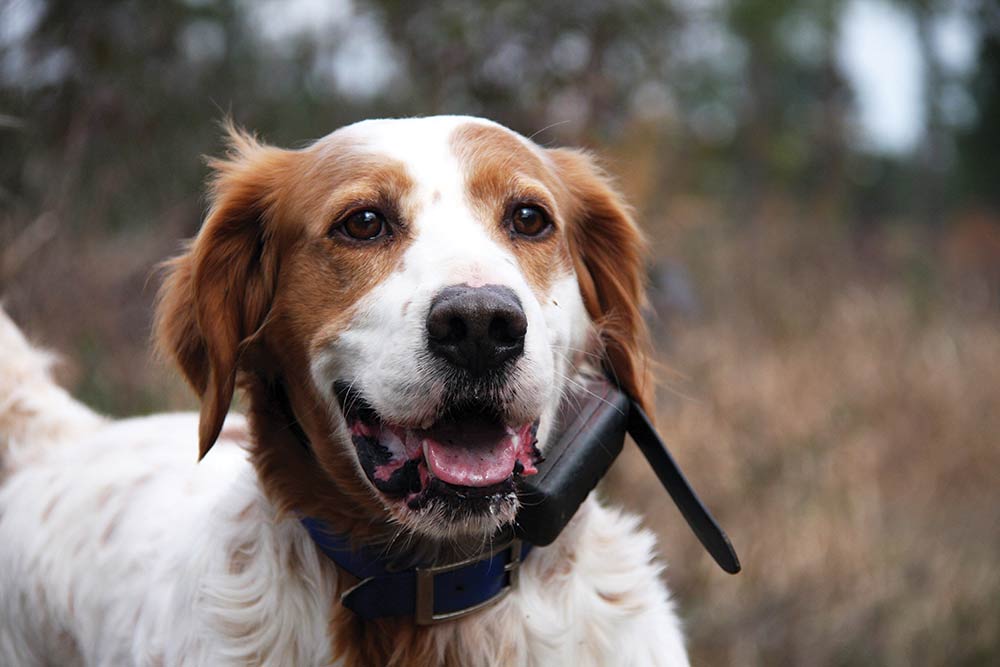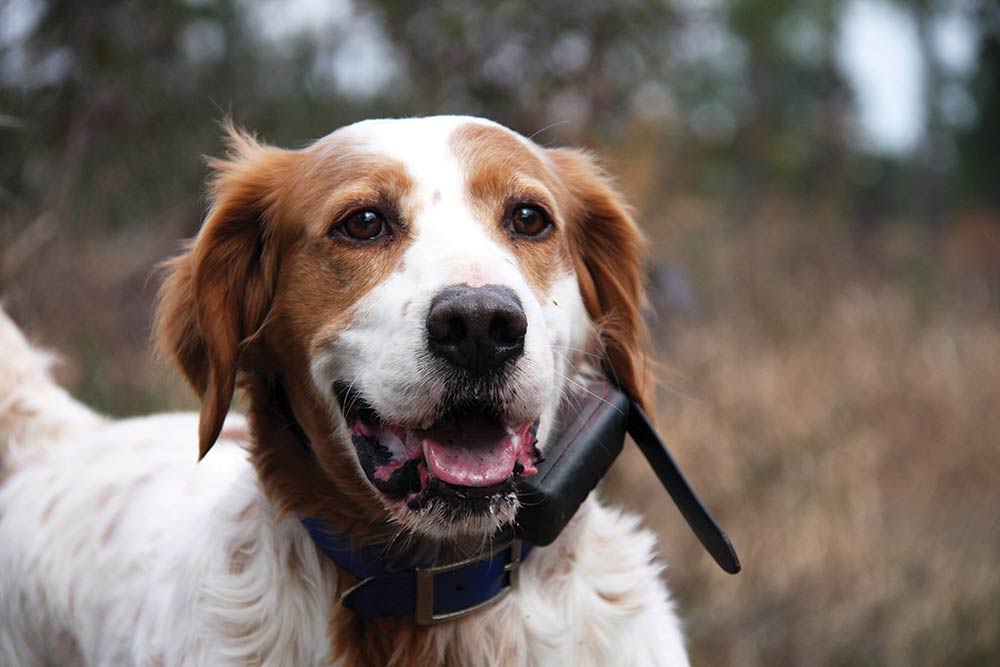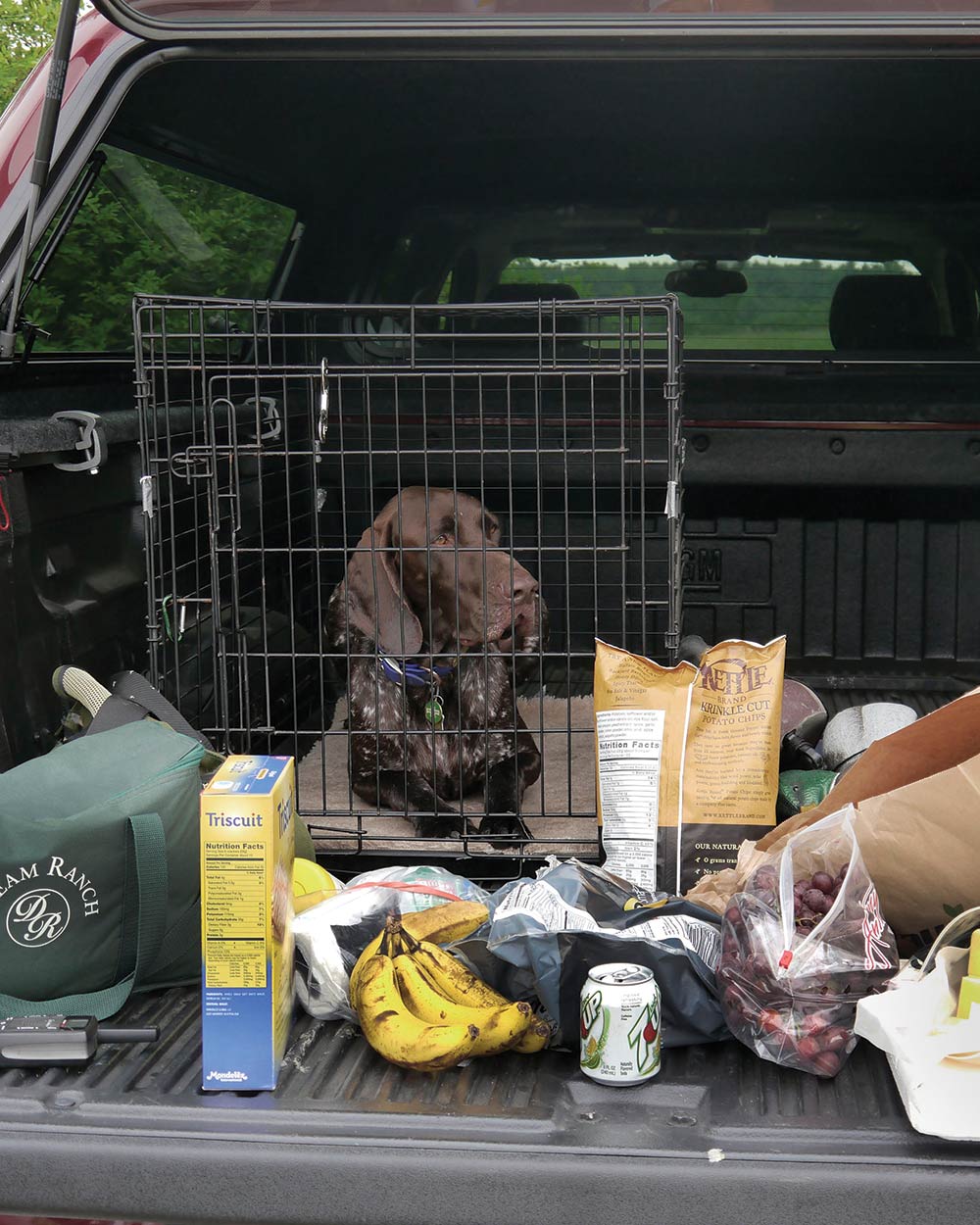About Our Companions: Canine Concerns III

In previous articles, we’ve examined gastric bloat and torsion, hypoglycemia, hypothermia, and heatstroke. In the last part of this special series, we’ll look at poisoning.
At 14 months, German shorthair Geena was amazing—not only for her excellent hunting skills, but also because she could sit on the front seat of a car with an unwrapped chocolate éclair on the dashboard and not wolf it down. Her owner, Andy Baker, says he could set down a juicy T-bone steak, leave the room, and Geena would not go near it. Who would have guessed that a capped bottle of antifreeze would prove irresistible to such a dog?
While helping a friend work on his truck, Andy made a quick trip to the store for a gallon of antifreeze, which he set on the backseat of the car. Geena always rode along with Andy and liked to hang out in his car. Shortly after returning to his friend’s garage, Andy discovered the bottle had its cap chewed off and the seal broken. “Geena has a nasty habit of taking caps off bottles quicker than spit,” Andy says. “I made the stupid mistake of not putting the bottle in the trunk. Knowing what antifreeze does to animals, I just about panicked.”
Uncertain if Geena had ingested any antifreeze, Andy immediately put a cap on the jug and brought it with him and Geena to the vet clinic nearby. Geena was given a dose of apomorphine to make her vomit. Both the vomitus and Geena’s blood tested positive for the presence of antifreeze. She was then given repeated doses of vodka, so her liver would process the alcohol instead of the antifreeze. For the next day and a half, Andy had to repeat the vodka doses in her food every four hours. Finally, tests showed the antifreeze had passed.

Hunting dogs can encounter additional poisons in hunting environments. Blue-green algae, for example, can be fatal if directly swallowed or ingested when a dog that swam through the algae licks its paws. Most mushrooms are benign but several varieties can be toxic and some dogs regard the great outdoors as their personal buffet. Clay pigeons contain coal tar, lead, zinc, and nickel, all of which can be toxic if ingested. Dogs that like to retrieve rocks and hard objects might grab clay targets and inadvertently swallow small pieces that break off. On hunting trips, our dogs are exposed to strange parking lots, tarmacs, rest areas, and hotels. Many dumpsters, puddles, and moist stains on the pavement should have the familiar skull-and-bones warning label on them—but of course they do not. In hotel rooms, insecticides or mouse poisons can be tucked under the bed or behind furniture.
The list of common household products, foods, and plants that can be poisonous to dogs includes antifreeze, gasoline, kerosene, turpentine, rat and mouse poison, insect bait, animal bait, insecticides, mothballs, human medications, batteries, hand warmers, lead, zinc, chocolate, raisins and grapes, macadamia nuts, onions, peach pits, apple seeds, raw bread dough, coffee grounds, xylitol artificial sweetener, milkweed, laurel, azalea, foxglove, amaryllis, poppy, mistletoe, the nightshade family of plants, marijuana, some ivy species, asparagus fern, spider mum, some types of mushrooms (particularly the “death cap”), and blue-green algae. Levels of toxicity vary, and the amount ingested influences the severity of the symptoms and danger.


Symptoms of poisoning include digestive upset, vomiting, diarrhea, behavioral changes, weakness, excessive salivation, and neurologic problems such as stumbling, convulsions, or seizures. If your dog has seizures, is having difficulty breathing, or loses consciousness, emergency veterinary care is critical. If you know what the dog has ingested, you know it is not a caustic substance, and you are not near a veterinary clinic, you can induce vomiting with hydrogen peroxide (2 ml per 10 pounds of weight). If the dog doesn’t vomit, repeat the hydrogen peroxide every 10 to 15 minutes until it works. If the ingested substance was caustic or you don’t know for sure, never try making the dog throw up because the acid coming back up can double the damage.
If—or when—you can get to a vet, take a sample of the suspected poison with you. In some cases, medical personnel may be able to do a chemical analysis—which might, in turn, make figuring out the best treatment easier. Always have available the phone number of one of the animal poison control centers like the Pet Poison Helpline or the ASPCA Poison Control. Some of these hotlines charge fees, others don’t. That information is available online, so you can pick the call center you’d prefer to work with and keep that number with you. They can help identify the best course of action if you know or even suspect your dog has ingested something poisonous. For example, administering vodka for antifreeze poisoning shouldn’t be done without consulting a vet or poison hotline because the frequency and dosage must be carefully calculated to avoid adding alcohol poisoning to the equation.
Originally published in Volume 3, Number 1 (Jan-Dec 2015) of Covey Rise.
WANT TO RECEIVE STORIES LIKE THIS FIRST?
























